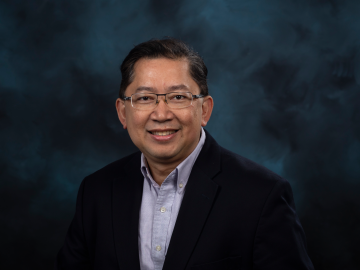
Filter News
Area of Research
- (-) Computer Science (4)
- (-) Energy Science (41)
- (-) Materials (50)
- Biology and Environment (58)
- Biology and Soft Matter (1)
- Computational Biology (2)
- Computational Engineering (2)
- Energy Frontier Research Centers (1)
- Fusion and Fission (1)
- Fusion Energy (1)
- Isotopes (1)
- Materials for Computing (12)
- Mathematics (1)
- National Security (9)
- Neutron Science (28)
- Nuclear Science and Technology (1)
- Quantum information Science (9)
- Supercomputing (92)
News Topics
- (-) Coronavirus (14)
- (-) Nanotechnology (41)
- (-) Quantum Science (15)
- (-) Summit (7)
- 3-D Printing/Advanced Manufacturing (90)
- Advanced Reactors (9)
- Artificial Intelligence (19)
- Big Data (11)
- Bioenergy (30)
- Biology (12)
- Biomedical (10)
- Biotechnology (4)
- Buildings (38)
- Chemical Sciences (33)
- Clean Water (10)
- Composites (19)
- Computer Science (48)
- Critical Materials (19)
- Cybersecurity (11)
- Energy Storage (85)
- Environment (64)
- Exascale Computing (4)
- Fossil Energy (2)
- Frontier (3)
- Fusion (7)
- Grid (41)
- High-Performance Computing (11)
- Hydropower (3)
- Irradiation (1)
- Isotopes (13)
- ITER (1)
- Machine Learning (14)
- Materials (94)
- Materials Science (90)
- Mathematics (3)
- Mercury (3)
- Microelectronics (1)
- Microscopy (29)
- Molten Salt (3)
- National Security (6)
- Neutron Science (42)
- Nuclear Energy (22)
- Partnerships (16)
- Physics (28)
- Polymers (21)
- Quantum Computing (3)
- Security (7)
- Simulation (4)
- Space Exploration (5)
- Statistics (1)
- Transportation (70)
Media Contacts
An international team of scientists found that rules governing plant growth hold true even at the edges of the world in the Arctic tundra.

In the fight against the COVID-19 pandemic, it’s a race against the clock not only to find a vaccine but also to supply healthcare workers with life-saving equipment such as face shields, masks and test kits.

In the race to identify solutions to the COVID-19 pandemic, researchers at the Department of Energy’s Oak Ridge National Laboratory are joining the fight by applying expertise in computational science, advanced manufacturing, data science and neutron science.

Scientists at the Department of Energy’s Oak Ridge National Laboratory have developed a new method to peer deep into the nanostructure of biomaterials without damaging the sample. This novel technique can confirm structural features in starch, a carbohydrate important in biofuel production.
A team of scientists led by Oak Ridge National Laboratory found that while all regions of the country can expect an earlier start to the growing season as temperatures rise, the trend is likely to become more variable year-over-year in hotter regions.

An international team of researchers has discovered the hydrogen atoms in a metal hydride material are much more tightly spaced than had been predicted for decades — a feature that could possibly facilitate superconductivity at or near room temperature and pressure.

Rigoberto “Gobet” Advincula has been named Governor’s Chair of Advanced and Nanostructured Materials at Oak Ridge National Laboratory and the University of Tennessee.

Liam Collins was drawn to study physics to understand “hidden things” and honed his expertise in microscopy so that he could bring them to light.

Students often participate in internships and receive formal training in their chosen career fields during college, but some pursue professional development opportunities even earlier.

Researchers at ORNL and the National Renewable Energy Laboratory took inspiration from flying insects to demonstrate a miniaturized gyroscope, a special sensor used in navigation technologies.


